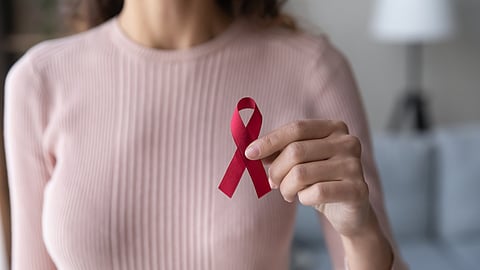

If the progress on HIV eradication continues to stick to its current pace, then 46 million people will be living with the deadly infection in 2050 — a new report by UNAIDS has noted.
At present there are an estimated 40 million people living with HIV across the world.
The UN agency released the report ahead of World AIDS Day which is observed on December 1).
The report titled Take the rights path to end AIDS revealed that the world is currently not on track to end AIDS as a public health threat by 2030.
The report underlined that the AIDS pandemic continues to be driven in large part by underlying inequalities and inequities that increase vulnerabilities, diminish service access and undermine the social solidarity needed to accelerate and sustain an effective HIV response.
These inequalities in the HIV response are often the result of human rights violations, many of them systemic and sanctioned by law.
Human rights violations, including discrimination against girls and women and criminalisation of LGBTQ+ people obstruct efforts to end AIDS, mentions the report.
In at least 22 countries in eastern and southern Africa, HIV incidence among adolescent girls and young women is more than three times that among adolescent boys and young men. Additionally, intimate partner violence is linked with a heightened risk of HIV acquisition among women.
Over a 10-month period in 2023 in Mali, community-led monitoring identified reports of violence against 367 LGBTQ+ people, nearly half (49 per cent) of whom were transgender.
Stigma and discrimination across six key settings (health, community, justice, workplace, education and humanitarian) reduce the effectiveness and public health impact of HIV treatment and access to prevention.
Nearly one in seven people living with HIV (13 per cent) surveyed in 2020–2023 experienced stigma and discrimination from health facility staff when accessing HIV care and treatment services.
Results from nationally representative surveys in 33 African countries found that increases in community-level stigmatising attitudes towards people living with HIV of 50 per cent were associated with people living with HIV being 17 per cent less likely to be on antiretroviral therapy.
Fear of discriminatory treatment or unauthorised disclosure of HIV status is a key reason for many people not seeking HIV testing or interrupting care after starting antiretroviral therapy.
The report stated the world can meet the goal of ending AIDS by 2030 if leaders guarantee the protection of human rights of people living with and at risk of HIV.
Ending national HIV epidemics requires a whole-of society response that draws on the contributions, talents and insights of diverse sectors and communities.
Ending AIDS as a public health threat would generate a net return on investment of US$ 7.9 per capita for each dollar invested between now and 2030 and US$ 10.6 per capita for each dollar invested between now and 2050.
By contrast, failing to meet global HIV targets will lead to huge economic, human and societal costs. The economic cost of inaction to achieve global HIV targets represents US$ 1.75 trillion by 2030 and US$ seven trillion by 2050.
By 2050, inaction could result in nearly 35 million more people acquiring HIV and 17.7 million additional AIDS-related deaths compared with a business-as-usual scenario, projects the report.